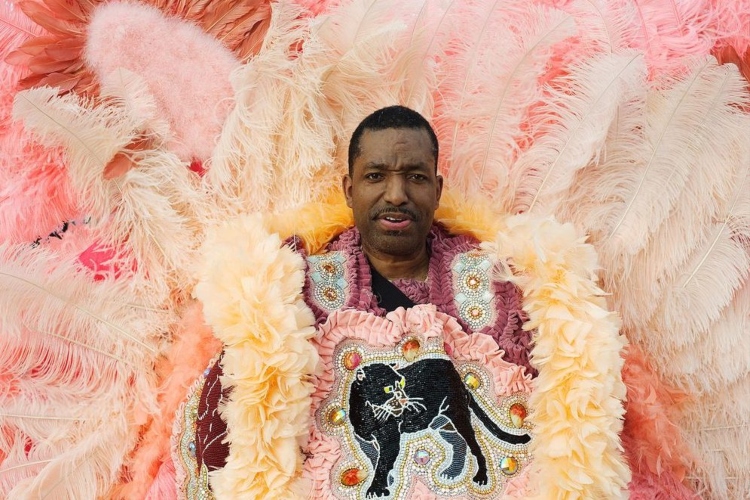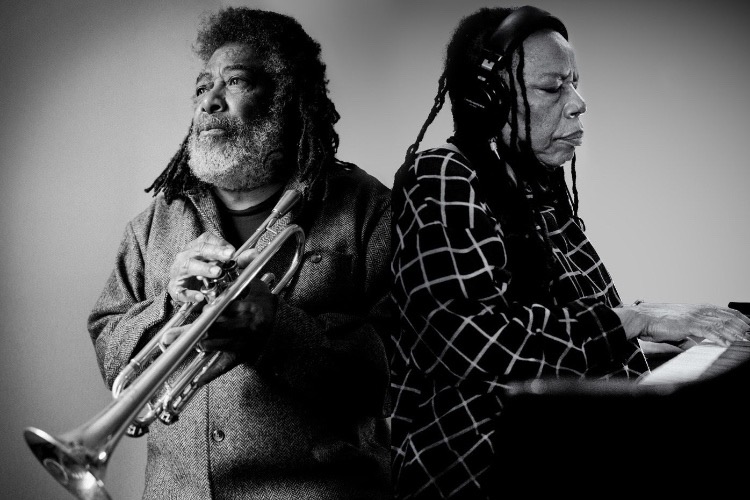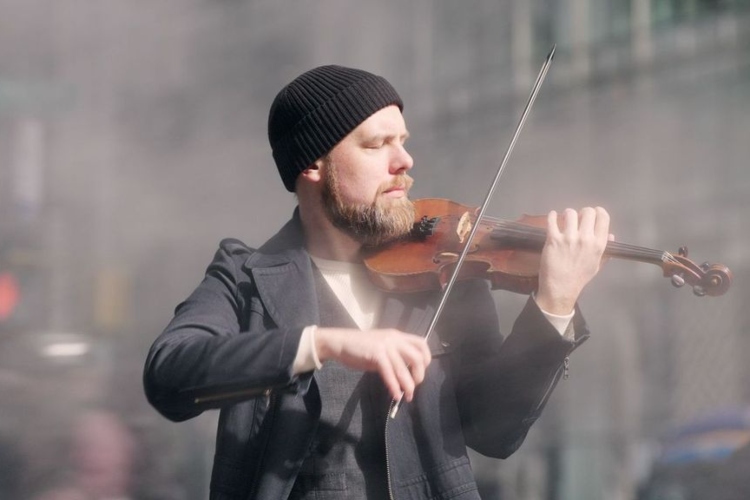Roots to Infinity: A Conversation with Donald Harrison, Jr. (Part Two)
|
Getting your Trinity Audio player ready...
|
We continue our conversation with NEA Jazz Master Donald Harrison, Jr. (read part one here) by digging into Mardi Gras Indians, Dr. John, Miles Davis, The Notorious BIG, and more.
PostGenre: Keeping with the topic of New Orleans tribal culture, one of your prior albums, Indian Blues (BMG, 1992), digs deep into the music of Mardi Gras Indians. What did you enjoy most about that project?
Donald Harrison: What stuck with me was the idea of placing together all of these musical elements. But because so much of it came from the different threads in our culture, it just felt right. All the elements felt natural to each piece. And, so, some people consider it a great R&B record. Some consider it a great jazz record. And yet others consider it a great cultural record. But it was all of those things and it just felt natural to bring them together.
PG: Plus Indian Blues allowed you to work with Dr. John.
DH: Yeah, Dr. John was originally supposed to perform on only a few songs, but he seemed to love it and stayed for the whole thing. I was taken aback that he even wanted to be a part of the project. Dr. John was an incredible musician.
But what I remember even more than working with Dr. John was having my father be a part of the project. [ed. Donald Harrison, Sr. was Big Chief of the Guardians of the Flame Mardi Gras Indians and provided vocals on Indian Blues]. He laid out some of what I call antiquity which brought cultural honesty to the record. And he was able to bring some more jazz sensibilities to the project as he deeply loved jazz music. He had so many stories about Miles Davis and all these other figures. And I’m sure those entered into our music as well.
PG: You also briefly worked with Miles Davis back in the 1980s
DH: I did.
PG: But you also were not a part of his full-time band. Do you ever wish that you had gone further with Miles than you did?
DH: I mean I could have played more with him, sure, but I was lucky to have been around him for as long as I was. I used to talk to Miles all the time. He was very supportive of the direction I was going. I still incorporate many of his ideas into my music and have studied many of his solos. I usually don’t say this, but Miles said he thought I would be an innovator if I worked hard enough. He also taught me about all of the great musicians he had played with. I talked about Bird and Lester Young a lot with him. I learned from talking to Miles about what he got from Bird and how he changed it around. He used to tell me that if you take an idea and change it enough, then it becomes yours. Miles Davis was oof, heavy heavy heavy heavy. And his eyes used to look like he was looking right through you. He could see everything inside of you; he had a different kind of gauge.
PG: Circling back to the music of New Orleans for a minute, Latin cultural influences are also very present in the city. Do you feel that growing up in New Orleans helped you when you later recorded with musicians like Eddie Palmieri and Arturo O’Farrill?
DH: Yeah, we are like cousins. [laughing]. A lot of “Latin” music uses the perspective of African percussion. We’re doing the same thing, we just came up with a slightly different answer. So when I first listened to Eddie and Arturo, their music made sense to me.
I got a chance to hang out with Cándido, who was a pioneer in Afro-Cuban conga. He was able to play New Orleans stuff, and he corroborated my thoughts about the relationship between Afro-Cuban music and jazz from New Orleans. When I told him my thoughts on the connections between New Orleans and Afro-Cuban music, he said, “you are 100% right, young man.” And since then, I’ve been able to sit down with many other musicians from Cuba, Haiti, Puerto Rico, and different places in Africa, and they have further confirmed that we are all connected.
PG: And in terms of the connection between musical ideas, there are also the ties between jazz and hip hop. What are your thoughts on the relationship between the two?
DH: I’ve been listening to hip hop since the late 70s; my generation started hip hop. I went to see the first hip hop concert at Madison Square Garden, of the Beastie Boys and Run DMC. I used to go to the Bronx to see what musicians were doing at the time.
PG: You also worked with Digable Planets and on Guru’s Jazzmatazz, both of which predated the ever-present modern melding of jazz and hip hop.
DH: Right. Those groups were ahead of where people were at the time, but it seems a lot of people have caught up since.
PG: But some people still struggle to understand the artistic merit behind hip hop.
DH: Sure. Even today not everyone understands the hip hop world or what the musicians have been trying to accomplish with their music.
PG: But coming from an environment where you could see hip hop developing at the ground level seems to have made you much more appreciative of it. You even mentored Biggie Smalls, who some view as the greatest rapper of all time.
DH: Biggie was trying to accomplish so much. Some people overlook his messages, but there were so many positive things that went inside that music that the younger people could understand. If you look up “Biggie Positive Affirmations” online, you will see all of those things. Things like “[k]eep trying. Persistence and consistency is the best thing. As long as you keeping it real, and you keep trying, keep banging that wall and it will fall” or “[c]onsidered a fool ’cause I dropped out of high school. Stereotypes of a black male misunderstood.”
Ultimately his music was all about giving young people positive personal reinforcement about themselves. When you listen to Biggie, I mean really listen to his music, he was saying if you work hard, you can achieve anything. But to get to that message, you have to understand how to really listen to his music. Biggie’s peers could understand. Younger people could especially hear that positivity. I knew and understood what he was doing partly because I was the one who taught him how to express himself that way. His messages weren’t always positive. He also talked about being in the drug game, which I didn’t agree with. But if you look at everything else, he was on point.
PG: You have had a long history of impressive mentees beyond Biggie as well. Is there anyone you taught that you feel has not quite received the attention they probably deserve?
DH: Well, I’m always thinking about the new guys in my band. We are going to be recording the multiverse idea I mentioned earlier. Our bassist is from Japan, Nori Naraoka, a pianist from Chicago named Dan Kaufman, and a young drummer, Brian Richburg. Brian took Joe Dyson’s spot when Joe was taken by Pat Metheny.
PG: Joe is doing incredible work as well.
DH: Yeah. He was the drummer I have worked with the longest out of my mentees. He still comes back and plays sometimes. We have a special bond, Joe and me. He reminds me of myself in some ways.
But as far as my newest group, these guys are incredible young musicians, and we’re gonna put some recordings out. So far, audiences from all over have loved our group. I’ve been very fortunate to be able to share information with younger people and then get on the bandstand and work things out. Young people are doing incredible things in the music world. I’m just a very lucky guy that I get to be a part of that.
PG: And it is hard to find gifted musicians younger than some of those in the Tipitina’s Internship Program, the immersive after-school program that you have led for several years. How did you first get set up with Tipitina’s Interns?
DH: The Tipitina’s Foundation asked me if there was something in particular that I would want to do if I could do anything in music. And I knew I wanted to pass down to younger generations the ideas that the elders taught me and asked me to pass down. So many of the elders used to talk to me for a few hours at a time and tell me their life history, their family history, how they played music, and asked me to pass it all down.
It is very important to me that those ideas and stories get passed through the generations. You can’t negate someone’s talent. But often when people hear an idea, they try to take it over and exclude others. I don’t believe in that. We should be applauding each person for the incredible gifts that they share with us. Everyone has a different gift. One of the best things we can do as musicians is to share our gifts with others. Every time you play with someone, you leave part of your gift with them. Every single time you play with someone, you leave with more than you came with. A lot of great musicians I have worked with – Bill Summers, Art Blakey, and others- have taught that music is a healing force. I’ll take it further; the musicians and audiences all heal each other. The more messages we can get out, the better a place we can create. Everything is beautiful.
The Headhunters’ Speakers in the House is now available on Ropeadope. It can be purchased on Bandcamp.
More information on Donald Harrison, Jr. can be found on his website.
Photo credit: Ryan Hodgson-Rigsbee




One thought on “Roots to Infinity: A Conversation with Donald Harrison, Jr. (Part Two)”